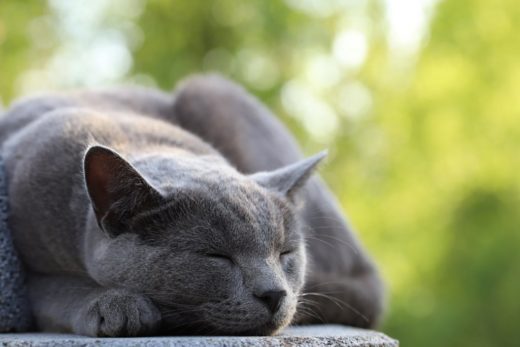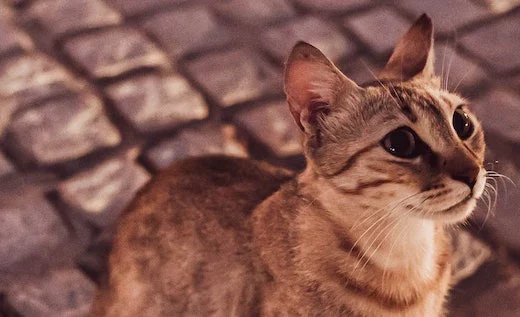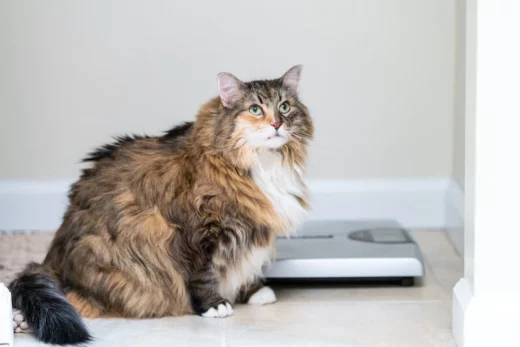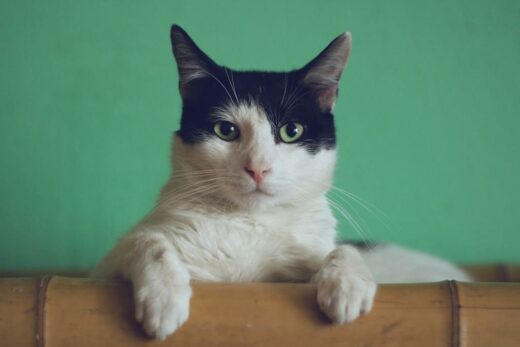Our little furballs are getting fatter. In their 2018 study, the Association for Pet Obesity Prevention found that 59.5% of cats in the United States are overweight or obese. That’s 56 million cats. And just like in humans, obesity in cats poses a serious health risk.
Join us as we look at how to tell if your cat is overweight, how it can affect their health, and what you can do get them down to a healthy weight.
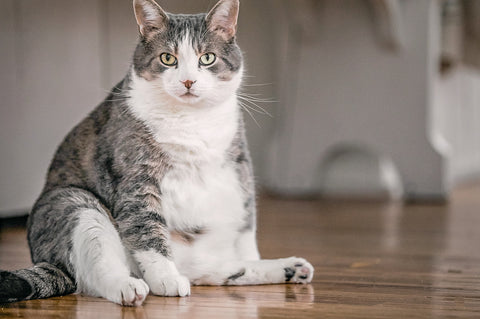
Is My Cat Overweight? Here’s How to Check
The quickest way to check if your cat’s overweight is by looking for visual clues. Start off by glancing down at your cat from a bird’s-eye view. Your cat’s body should start to narrow at the waist if they’re at a healthy weight. If not, your cat might be overweight. Time for a closer look, just to be sure.
Reach out and stroke your cat along its chest and sides. If you’re unable to feel their ribs, there’s a good chance they’re overweight. You should also pay attention to your cat’s physical activities. A healthy cat will live an active lifestyle. From leaping up fences to chasing other cats in the neighborhood, a fit feline will be able to do all of this without breaking a sweat. Unhealthy cats will look labored while moving around, lacking the fluidity, balance, and grace of a healthy cat.
However, be aware that just looking at or stroking your cat might not be enough to know if your feline friend is overweight or obese. Weight can vary depending on breed. For example, an adult male Maine Coon can weigh up to 25 pounds. For most some breeds, however, the average healthy weight is between 8 and 15 pounds. If you’re still unsure, consult with your veterinarian.

